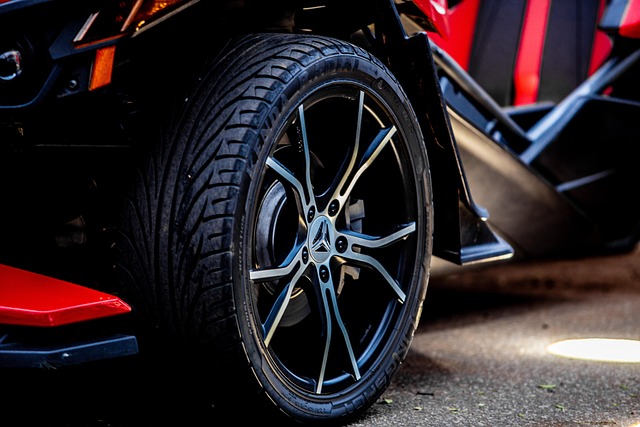Looking to register your car in California? Navigating the process can seem daunting, but with the right preparation, it’s straightforward. This guide walks you through every step, from understanding key requirements like proper documentation and a valid VIN (Vehicle Identification Number) to using a VIN verifier to check your vehicle’s history. We’ll also detail where to submit applications and fees, and how to receive your official registration papers.
- Understand California Car Registration Requirements
- Gather Necessary Documents for Registration
- Use VIN Verifier to Check Vehicle History
- Submit Application and Fees at DMV Office
- Receive Your Vehicle Registration Papers
Understand California Car Registration Requirements

Before registering your car in California, it’s crucial to understand the state’s specific requirements for vehicle registration. This process involves several steps, including verification of your car’s Vehicle Identification Number (VIN). The VIN is a unique code that identifies your vehicle and plays a vital role in the registration process. In California, you’ll need to ensure your car passes a VIN inspection to confirm its authenticity and history.
One efficient way to complete this step is through mobile vin verification services. These services allow you to get a quick and accurate VIN inspection right from your location. Instead of visiting an inspection station, a professional will come to you to perform the vin inspection, ensuring a seamless and time-saving experience while meeting California’s registration requirements.
Gather Necessary Documents for Registration

Before you begin the registration process, it’s crucial to gather all the essential documents. This includes your vehicle’s Certificate of Title (or Proof of Purchase), which is typically provided by the seller or dealer during the purchase of a used car. Additionally, you’ll need to supply proof of insurance and a valid driver’s license. The Vehicle Identification Number (VIN) plays a critical role in this process; consider using a mobile VIN verifier for convenience. This unique identifier can be quickly and easily checked against national databases to ensure its authenticity, making it an invaluable tool during the registration check.
Furthermore, you might require a completed Application for Title and Registration form from the California Department of Motor Vehicles (DMV). This form is available online or at any DMV field office. Some vehicles may also have specific requirements, such as emissions testing or safety inspections, so it’s important to verify these before heading to the registration center. A mobile VIN inspection can help you identify potential issues early on, ensuring a smoother registration experience.
Use VIN Verifier to Check Vehicle History

Before proceeding with registration, it’s crucial to conduct a thorough vehicle history check using a VIN verifier. This step is essential as it allows you to access critical information about your car’s past, ensuring there are no hidden issues. Many online platforms offer mobile VIN inspection services, making it convenient for California residents to verify their vehicle’s history from the comfort of their homes.
These services provide detailed reports, including accident records, ownership history, and maintenance logs. By utilizing a mobile VIN verification tool, you can save time and effort, eliminating the need for visits to government offices or dealing with paperwork. This is particularly beneficial when purchasing a used car, ensuring you make an informed decision.
Submit Application and Fees at DMV Office

After gathering all necessary documents, it’s time to head to your local California Department of Motor Vehicles (DMV) office. Here, you’ll submit your application for vehicle registration along with the required fees. It’s crucial to ensure that all information provided is accurate and complete to avoid any delays or issues during the registration process.
At the DMV, you can expect a straightforward procedure. You’ll need to present your vehicle’s documentation, including its Vehicle Identification Number (VIN), which can be verified through a mobile VIN verification service or by inspection at the DMV. This step is essential for identifying your car and ensuring it meets all legal requirements before granting registration approval.
Receive Your Vehicle Registration Papers

After completing your vehicle purchase, it’s crucial to receive your Vehicle Registration Papers (VRP) from the seller or dealership. This document is essential for registering your car with the California Department of Motor Vehicles (DMV). The process involves a series of checks and verifications, starting with a VIN (Vehicle Identification Number) inspection. You can conduct a VIN verification using official tools to ensure the vehicle’s history and authenticity.
For convenience, many services offer mobile VIN inspections or mobile vin verification, allowing you to complete this initial step without visiting a DMV office. By ensuring your VRP is in order and your VIN is accurately verified, you’ll be one step closer to legally registering your new car in California.
Registering a car in California involves understanding key requirements, gathering essential documents, utilizing a VIN verifier for vehicle history checks, submitting applications and fees at a DMV office, and eventually receiving your vehicle registration papers. This process ensures compliance with state regulations and provides proof of ownership, vital for road safety and legal driving. Remember to use a reliable VIN verifier to access detailed vehicle histories, streamlining the registration experience.
